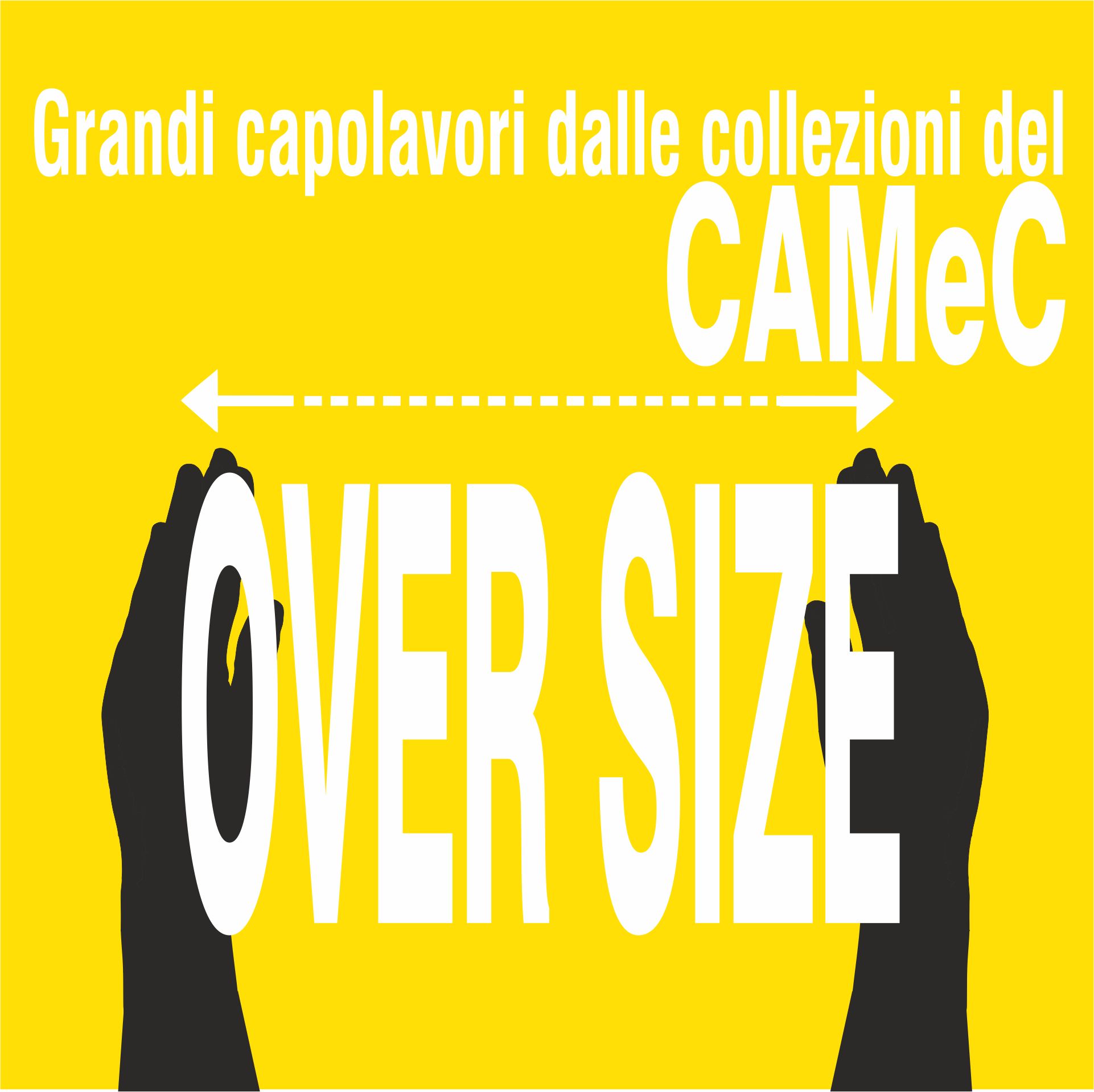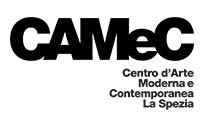
OVERSIZE
The exhibition is a contrasting echo of the 2017/2018 one entitled Small Size. Small masterpieces of the CAMeC collection. While in that project about 200 small works crowded the exhibition area, imposing a close-up view, in this new itinerary just forty or so large-format works interact with one another, offering the viewer a powerful visual impact.
So this anthology has been selected according to size and laid out in an itinerary whereby the chronological criterion is associated with affinities in language, aesthetic approach, theme. The works have been chosen from all the various collections kept in the CAMeC.
The “historic nucleus”, i.e. the precious collection of paintings purchased during the National Painting Prize named after the Gulf of La Spezia, is amply represented. This exhibition-cum-competition animated La Spezia summers from 1949 to 1965, attracting important, also international-level artists, who in those years were promising newcomers and are today widely historicized and present in museums.
The work Boys looking for crabs, a painting by Renato Guttuso representing maritime labour, has been chosen to open the exhibition. This work won first prize in the first year of the competition, 1949, and is attributable to the Sicilian artist’s interesting pre-realist period. Some of the other great paintings by well-known artists which are present in the CAMeC thanks to the Gulf Prize and are on show here are: a 1952 work from the famous series of Windows by Giuseppe Santomaso, an effective example of the “abstract/concrete” period; a precious digression into painting by the architect Ettore Sottsass Jr., Sea Port from 1952, from his period of adhesion to the tenets of the Concrete Art Movement (MAC), which was very popular with architects; Ways of the World by Emilio Vedova, a very important work from 1953, a singular example of his early adhesion to the Informal trend; The gentle hills of Brisighella by Mattia Moreni, a majestic informal landscape which won first prize in 1954; the 1963 Eyeless by Emilio Scanavino, an impressive example of his particular emotionally-charged abstract approach.
The presence of various international artists is mostly thanks to the “Giorgio and llda Cozzani” group of works. Giorgio Cozzani was an omnivorous, encyclopaedic collector, untiring and constantly on the move, and particularly attracted to contemporary foreign art. He regularly visited the Venice Biennale, Documenta in Kassel, but also the most important galleries of Paris and London.
The CAMeC owes some large-format rarities to his fine instinct. These include: Infernalezza (translator’s note: untranslatable, a play of words on Inferno) by Herbert Sturm, 1962-63, quirkily positioned in his house/gallery on the dining-room ceiling (the work will be transferred to Germany in summer 2020 for a retrospective of the artist); Ob-ject (Art as Idea as Idea) by Joseph Kosuth, the inventor of so-called conceptual tautolology, being one of his famous enlargements of the text of a glossary entry; Spring Gauze by Kenneth Noland, one of the most authoritative exponents of Colour Field Painting, a singularly-shaped markedly elongated work from the Plaid series of the 1970s; the 1987 Potatoes by Thomas Schütte, the famous German sculptor, an early two-dimensional work which is in fact part of the series based on this edible tuber and is shown in hugely exaggerated dimensions in order to stimulate viewers’ questions; the 1967 Matches by Raymond Hains is equally imposing, monumental matches fashioned by the French artist from the mid-60s on.
The exhibition also includes some works which won prizes (and were purchased thanks to the prize/purchase formula) in the renewed Gulf Prize, European Visual Arts Biennale (2000-2006), for example Untitled by Cristiano Pintaldi from 2000; at the time the artist was at the beginning of his distinctive simulation of pixels, and in this case he reproposes a character from the early days of TV science fiction, the platinum-blonde Commander Ed Straker from the series UFO.
On display in Room 5 are also three sculptures whose authors ((Anna Dębska and Paolo De Nevi) are not part of the Oversize exhibition. Their presence is due to the educational activity carried out in the rooms of the museum in close conjunction with the exhibitions in progress. In this case, they are representations inspired by the animal world, on which some workshops are based: To each his own house and The place, the landscape and the environment, for Primary and Secondary schools, respectively.
CREDITS
Exhibition promoted by
City of La Spezia
Mayor, Pierluigi Peracchini
and produced by
Centre of Modern and Contemporary Art
Massimiliano Curletto, general manager of Cultural Service
with the contribution of
Coop Liguria
Enel
curated by: Eleonora Acerbi in collaboration with Cristiana Maucci
press offices
City of La Spezia: Luca Della Torre | ph. +39 0187 727324 | ufficiostampa@comune.sp.it
CSArt – Comunicazione per l’Arte: Chiara Serri | ph. +39 0522 1715142 | mobile +39 348 7025100 | info@csart.it| www.csart.it
